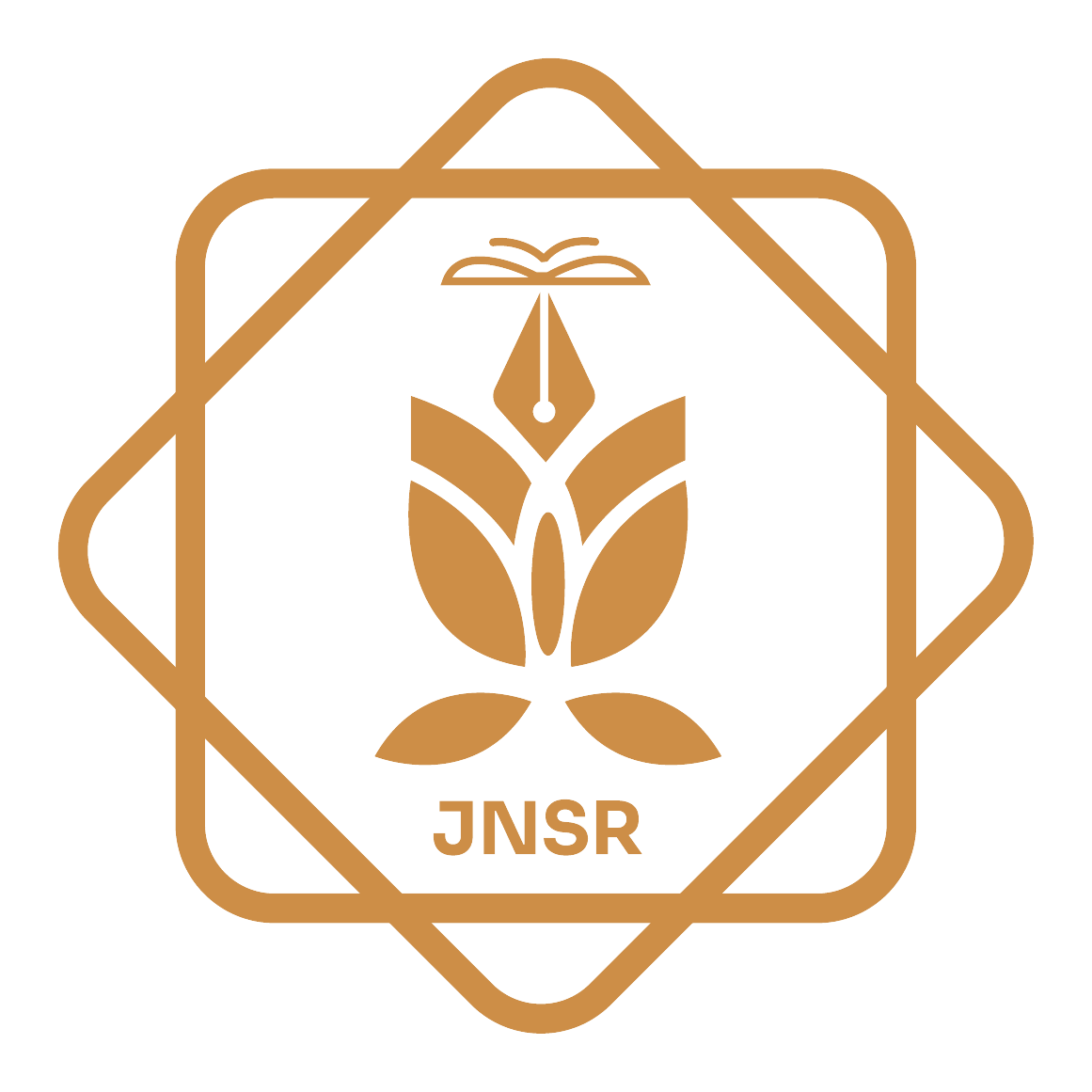Baseline Survey of Plant Species Along Salang Road in Afghanistan
DOI:
https://doi.org/10.62810/jnsr.v2i3.86Keywords:
Salang Road, Baseline survey, Plant species, Botanical diversity, Environmental impactAbstract
The Salang Road, a critical transportation corridor, serves as a vital link connecting the northern and southern parts of Afghanistan. In response to the government's decision to upgrade this road, assessing and documenting the plant species in the region is crucial. This study was conducted to catalog the plant species along the Salang Road, aiming to establish a comprehensive understanding of the area's botanical diversity. Plants were recorded using the quadrate sampling method at 35 sampling points. A transect line was set up at each sampling point, 5 quadrats were established along each line, and the occurrence of plants within the quadrat frame was recorded. Quadrat sizes, determined using the minimal area method, were 10×10 m for trees, 2×5 m for shrubs, and 1 m2 for herbs. Plants were identified with the help of literature and by comparing with the deposited specimen of Kabul University Faculty of Sciences Herbarium (KUFS). Data were analyzed using Microsoft Excel. 135 diverse species, including trees, shrubs, and herbs, representing various ecological niches were documented. These species belong to 46 plant families, and the most abundant ones were Asteraceae, Apiaceae, Rosaceae, Lamiaceae, Fabaceae, and Polygonaceae. The survey additionally examined road construction's impact on plant species' distribution and diversity. The survey provides valuable insights into the Salang corridor area's botanical diversity and ecological significance, serving as a foundational dataset for future environmental conservation and land management efforts. The information obtained from this study can support qualified decision-making and sustainable development practices in the region.
Downloads
References
Alam, M. (2012). Trees and Shrubs of Afghanistan: A Dendrological Guide. Lausanne.
Al-Snafi, A. E. (2020). Constituents and Pharmacology of Fumaria Officinalis- A Review. IOSR Journal Of Pharmacy, 10(1), 17-25. Retrieved from https://www.researchgate.net/profile/Ali-Al-Snafi/publication/338902020_Constituents_and_pharmacology_of_Fumaria_officinalis-_A_review/links/5e31e6e3a6fdccd9657672a7/Constituents-and-pharmacology-of-Fumaria-officinalis-A-review.pdf
Ashouri, E. (2023, 5 8). The Impact of Road and Highway Infrastructure on the Environment and Climate Change. Retrieved from Linkedin: https://www.linkedin.com/pulse/impact-road-highway-infrastructure-environment-climate-ehsan-ashouri/
Babury, M., & Keusgen, M. (2019). Sustainable Resource Management of Medicinal and Aromatic Plants of Afghanistan (Dissertation). Marburg, Hessen, Germany: Philipps University of Marburg.
Breckle, S. W., & Rafiqpoor, M. D. (2010). Field Guide Afghanistan. Bonn: Scientia Bonnensis.
Breckle, S. W., Hedge, I. C., & Rafiqpoor, M. D. (2013). Vascular Plants of Afghanistan. Bonn: Scintia Bonnensis.
Cerdà, A., Lucas-Borja, M., Franch-Pardo, I., Úbeda, X., Novara, A., López-Vicente, M., . . . Pulido, M. (2021). The role of plant species on runoff and soil erosion in a Mediterranean shrubland. Science of The Total Environment, 779, 149218. Retrieved from www.sciencedirect.com/science/article/pii/S0048969721042911 DOI: https://doi.org/10.1016/j.scitotenv.2021.149218
Devarkar, V. D., Nichat, V. V., & Joshi, M. P. (2018). Baseline Impact Assessment Studies on Flora & Fauna around Goa Industrial Development Corporation (GIDC), Goa Zone. Plantae Scientia, 1(1), 09-17. DOI: https://doi.org/10.32439/ps.v1i01.9-17
Ford, H., Garbut, A., Ladd, C., Malarkey, J., & Skov, M. (2016). Soil stabilization linked to plant diversity and environmental context in coastal wetlands. J Veg Sci., 27(2), 259-268. DOI: https://doi.org/10.1111/jvs.12367
Karimi, A., & Keusgen, M. (2022). Traditional use of medicinal plants in Afghanistan with respect to the Kabul and Parwan regions (Dissertation). Marburg: Philipps University of Marburg.
NEPA. (2010). Afghanistan's Protected Species List. Kabul: NEPA.
Podlech, D. (2012). Checklist of the Flowering Plants of Afghanistan. München, München, Germany.
Rahman, A. U., Khan, S. M., Khan, S., Hussain, A., Rahman, I. U., Iqbal, Z., & Ijaz, F. (2016). Ecological assessment of plant communities and associated edaphic and topographic variables in the Peochar Valley of the Hindu Kush mountains. Mountain Research and Development, 36(3), 332-341. doi:10.1659/MRD-JOURNAL-D-14-00100.1 DOI: https://doi.org/10.1659/MRD-JOURNAL-D-14-00100.1
Ravanbakhsh, M., & Amini, T. (2014). A Study on Floristic Composition, Chorology and Ecological Structure: A Case Study from a Small-scale Forest Reserve, Talesh, Iran. IUFS Journal of Biology, 73(1), 43-51. doi:10.5829/idosi.wasj.2013.28.11.1803
Soltani, S., Shakeri, A., Iranshahi, M., & and Boozari, M. (2021). A Review of the Phytochemistry and Antimicrobial Properties of Origanum vulgare L. and Subspecies. Iran J Pharm Res., 20(2), 268–285. doi:10.22037/ijpr.2020.113874.14539
Woods, N., Karimi, M., Jafari, I., & Hinchliffe, R. (2022). Geological and geotechnical investigations for the Salang highway, Afghanistan. Quarterly Journal of Engineering Geology and Hydrogeology, 55(3), August 2022. doi:10.1144/qjegh2021-189 DOI: https://doi.org/10.1144/qjegh2021-189
Downloads
Published
How to Cite
Issue
Section
License
Copyright (c) 2024 Abdul Ghani Karimi, Reinhard Michael Fritsch , Mustafa Hassani , Chun-Lei Xiang

This work is licensed under a Creative Commons Attribution-NonCommercial 4.0 International License.












